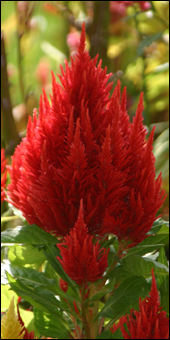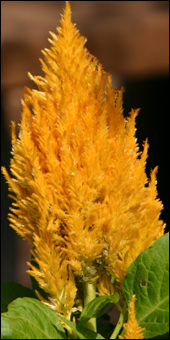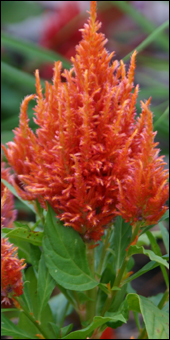![]()
FIRST VEGETABLE GARDEN
RAIN GARDENS
THE OZ VICTORY GARDEN
GARDENING TO SAVE MONEY
INCREASE YOUR BOTANY SAVVY
TILLING VS CULTIVATING
THE PERILS OF PEAT
THE DIRT ON SOIL
TINES, TINES, TINES
WHY AND HOW TO TILL
RENT OR BUY
HOW TO RENT & USE A BACKHOE
FALL LANDSCAPING TIPS
ECO FRIENDLY TIPS
USING GOOD PESTS TO FIGHT BAD PESTS
BUYING A LAWN MOWER?
TILLER CARE
COMPOSTING 101
MY NEW TILLER
AWARENESS WEEK
![]()
INTRODUCTION
SMALL TILLERS
MEDIUM TILLERS
LARGE TILLERS
HAND CULTIVATORS
WEBSITE REVIEWS
![]()
ABOUT THIS SITE
CONTACT OZ
CONTRIBUTION
JOIN THE DISCUSSION
RECOMMENDED READING
THE OZ BOOK STORE
Comparing Tilling and Cultivating
Some people use the words “tilling” and “cultivating” interchangeably, but they’re really two different activities.
Tilling
Tilling is the act of preparing the soil for planting. All large and medium sized tillers are designed to till, and only to till. Tillers will turn, break-up, and mix soil to a depth of 8 to 10 inches in a single pass. Unlike plowing, which usually results in rows of turned (but unmixed) soil, tilling mixes the soil and breaks down the particle size so that planting will be both easier and more productive. Tilling may also involve the mixing of intentionally added soil components, like sand, compost, leaves, lime, or other soil amendments. A well-designed tiller will also enable you to shred and mix either a cover crop (like rye) or the remains of last season’s garden.
When to Till
Almost all gardeners will till their soil at the beginning of the gardening season. Tilling at the beginning of the season obviously prepares the soil for the new season’s garden. You will want to till your garden as soon as the soil is dry enough to work it comfortably, and, ideally at least a week or so before planting.
My observation is that fewer gardeners till their gardens at the end of the season. But, they should.
Tilling at the end of the season “puts it to bed” by mixing any remaining plant material with the soil so as to both aid the natural decomposition process and to eliminate, or significantly reduce, habitat for unwanted garden pests. If you till your garden at the end of the season, you should consider covering the soil with mulch to reduce erosion by rain (especially if your garden is on sloping land) and wind. Straw will work well, but I personally prefer a mixture of ground-up dried leaves and grass clippings. They’re free and I think they look more natural.
Cultivating
Cultivating is either the act of removing weeds from the garden or the careful breaking the surface’s crust to improve water, air, and nutrient penetration and absorption. However, regardless of your intention, cultivating almost always does both – reduces weeds, and improves the soils absorption ability. Some of the mini-tillers are designed to do both tilling and cultivating, while some mini-tillers are really only effective at cultivating. Click Here for a brief description of mini-tillers as tillers and cultivators.
Virtually all hand tools for the garden are designed to cultivate, and not to till. Of course, you can turn and mix soil with a shovel; but, a shovel isn’t really the best tool for that job. Click Here for a list of my favorite hand cultivators.
Cultivating to remove weeds improves your garden’s performance because the plants – either flowers or vegetables – don’t need to compete with the weeds for the nutrients in your soil. And, weed removal almost always improves the garden’s appearance.
What is a weed?
My favorite definition of a weed is any plant that is growing where you don’t want it. Grass, for example, isn’t a weed on your lawn; but, grass in the vegetable garden or among your beautiful perennials is usually a weed! And, while many folks like the appearance of wild violets in the woods, I consider them weeds in my vegetable garden.
When Unintended in Not a Weed
I have recently become fascinated with the concept of allowing certain “volunteers” to flourish in my otherwise well-planned garden. A volunteer is a plant that springs up by surprise, having been planted by the wind, an insect, or a bird. Last year I had dozens of plume celosia among my vegetables. I chose to let most of them mature through the season, as they added an almost whimsical rainbow of color to my nearly all green vegetable garden. They made cultivating a little more challenging, but it was worth it.
 |
 |
 |
More on Cultivating
Cultivating also breaks up the soil to allow it to more readily allow water, air, and nutrients to be absorbed. If you are side-dressing your tomato, corn, or roses with a mid-season feeding, it’s always a good idea to do a little shallow cultivating. This process puts most of the plant food in contact with the soil nearer to the roots of the plants; it prevents “run-off” from rain or watering; and, it interrupts the growth of any tiny weeds that would like to compete the nutrients and spoil the view of your garden. I usually add a couple of inches of mulch after cultivating, to help soil stay moist.
If you have any comments, I’d really like to hear from you.
OZ Gardener
The Garden Of Oz
Feel free to share this article however it has to be copied and published the same way as on this website, without any changes and please include a link to the original material.
Reviews
Read Reviews (4)Write a Review
Avg Rating:

4.8 out of 5
 April 12, 2012
April 12, 2012By: Keren
How long in general should you wait to till after a good rain?
 June 13, 2010
June 13, 2010By: Alan B
great article, like your stuff, specialy the compost info, just starting my own. Thanks
 June 12, 2010
June 12, 2010By: rachel
Thank you so much i have been searching for an article such as this. I now have a clear understanding of what the difference between the two is thank you again!
 February 15, 2010
February 15, 2010By: Sam
Great article on the difference between cultivating and tilling.

